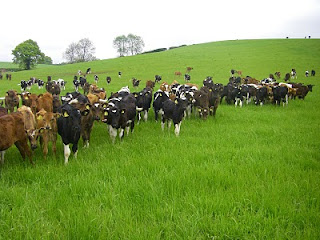
The more that it (dairy heifer rearing in different countries) is different, the more that it is the same. This could be a summary of the research study of Gwennoline Caroff, a French student from ENSA Toulouse, has conducted in Brittany, Denmark, Quebec Canada & with Pasture to Profit dairy farms in the UK.

To have an idea of how the heifers are reared in different countries, the project was to build a questionnaire and to interview about 10 farmers and some experts in dairy in each country. So the following information is for some farmers from each country and can not be taken as an average for the country. 
Country Comparison

Country Comparison

Heifers in a pad, on cubicles, on straw based diet, until AI
Farms in Brittany are much smaller than farms in the UK, but are run on the same idea of cows turned out on grass. Whereas in Denmark and Quebec, the cows are housed all year round. It’s quite interesting to compare the culling and the replacement rate of each country. Most of you would be surprised how high the culling rate in Denmark is: Lameness is the biggest reason.

Age at first calving is an interesting data too:
age at first calving late + high replacement rate = high cost to rear heifers!!!!

And UK is not the most efficient!!!!
An Interesting Benchmark
YES, the replacement rate of UK is quite low, BUT, if you use one of the benchmarks used in Brittany: number of heifers per 100 000 L of milk produced. (The target would be 4.5 heifers entering the herd for 100 000 L), you can compare the different countries:

And UK is not the most efficient!!!!

Gwennoline would like to thank all of the UK Pasture based Discussion Group farmers who have helped her with her study. Later in the year she will send each farmer a report.
Please comment below we are interested in your thoughts.

I think most UK pasture based dairy farmers are capable of maintaining 4 or less heifers per 100,000litres. This is effectively a 20% replacement rate. That is unless there is a deliberate plan to sell surplus heifers or out of calving pattern cows.
ReplyDelete